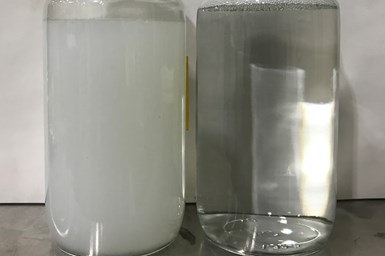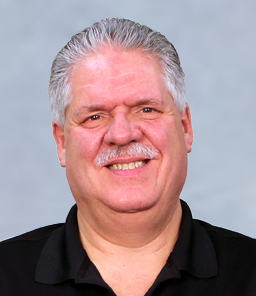Improving Wastewater Management Efficiency
Don’t find yourself underwater when managing wastewater processes. Follow these steps to improve efficiency and determine the best ROI.
As operations with surface treatment applications develop strategies to lower costs, meet sustainability goals, and satisfy compliance requirements, on-site process water and wastewater treatment systems are gaining popularity.
However, companies pursuing these enhancements must approach fluid processing improvements systematically to ensure a positive impact on operations. Here are some key steps companies should consider taking to determine the best return on investment.
Start with Feasibility
Because the chemical composition of process waters and wastewaters varies from operation to operation, treatment systems for individual applications often require numerous subsystems to produce an end-to-end solution that meets treatment goals and provides reusable water. Determining exactly what combination of equipment is needed and what ROI will look like begins with an in-depth application feasibility study. Often, equipment providers of waste stream management systems will facilitate a feasibility assessment on behalf of potential customers. The following are steps for a thorough feasibility study:
1. Define the goals and scope of the process improvement. Determine what the process and wastewater system should achieve. Reducing water expenses, avoiding hazardous waste liabilities and disposal costs, improving the company’s approach to sustainability and creating process efficiencies are all possibilities. Then, identify which waste stream fluids will need to be treated to meet the objectives.
Working with the wastewater treatment provider to examine a fluid sample using the specified equipment is a critical step to completing a feasibility study. A written evaluation of the fluid sample should include a summary of the suggested treatment process and before and after contaminant metals’ concentrations and reduction. Photos showing the results of the fluid and waste sludge residue are also beneficial. Photo Credit: All photos courtesy of PRAB
2. Complete an independent fluid analysis by a certified lab prior to equipment specification. Laboratory results from a sample test of fluids provide a snapshot of a particular process waste stream. Rarely are two waste streams exactly alike. Therefore, knowing exactly what the waste fluid contains and the characteristics of the fluid are essential for identifying the treatment and recycling equipment necessary to achieve operational goals. Considerations will need to be made for flow rates, discharge limits and requirements for reuse in the manufacturing process. Testing the fluid will allow a solutions provider to determine if pre-treatment and/or post-treatment is necessary. Be sure to supply the requisite safety data sheets to the equipment provider.
3. Work with the equipment provider to examine the fluid sample using the specified equipment. Ask for a written evaluation of the fluid sample that includes a summary of the suggested treatment process and before and after contaminant metals’ concentrations and reduction. Photos showing the results of the fluid and waste sludge residue are also beneficial.
4. Estimate the capital, operating costs and risks associated with implementing the proposed treatment system. Evaluate energy and labor needs, estimated installation costs, footprint considerations, expected maintenance and downtime risks.
5. When possible, execute on-site pilot testing of the fluid to verify the expected results from the equipment. A trial of the treatment equipment at the facility is the best way to verify the system will meet the operation’s production requirements. A period of one to three months will usually uncover any adjustments that need to be made. Inquire about costs to conduct pilot testing and find out if any of the costs would be applied to the purchase of the system.
The Importance of Customization
A total solutions provider of waste stream management equipment will use the data gathered during the testing process to specify a treatment system

Vacuum evaporation, distillation and crystallization processes reduce process water and wastewater volumes through evaporation and crystallize the concentrate. The concentrate can be hauled away, distillate reused and solids disposed of.
uniquely suited to meet operational goals. The right combination of equipment can help companies meet zero manifesting goals, comply with federal Resource Conservation and Recovery Act requirements and state and local discharge regulations as well as lower operating costs.
For example, rinse water from plating/metal finishing operations creates wastewater that can be reused in rinsing applications and process baths after being treated by a well-designed system. Disposal after treatment also becomes much more efficient. Processes that are typically used to treat and recycle metal finishing/plating rinse water treatment and recycling include:
Automated pH adjustment: This technology is used to remove heavy metals and organic compounds from process water or wastewater. Before discharging the effluent from a water treatment system to a publicly owned treatment works (POTW), a specific pH range must be met for compliance. Higher flow rates usually require continuous pH adjustment, while batch pH adjustment can usually accommodate lower flow rates (less than 10 gpm).
Ultrafiltration: Removes emulsified oils and precipitated metals without the use of chemical additives. The quality of the effluent that ultrafiltration produces is very consistent. Ultrafiltration does not require heat, which helps to keep energy costs low. Also, different membrane configurations can help accommodate floor space considerations.
Reverse osmosis (RO): This is often used as a secondary treatment after ultrafiltration to remove dissolved salts, as well as colloidal and suspended matter. The membranes are engineered to allow only one-way flow through the system. Therefore, pretreatment is necessary for any RO system.
The permeate (the water that passes through the RO membrane) can be directed back into the application for re-use. The concentrate (the dissolved salts rejected by the RO membrane) can be either sent to the POTW or processed more on-site to further reduce the wastewater volume.

Ultrafiltration is often used in on-site wastewater treatment to produce a quality effluent that is consistent enough to be re-used in metal finishing operations.
Vacuum evaporation, distillation and crystallization: These processes reduce process water and wastewater volumes through evaporation and crystallize the concentrate. The concentrate can be hauled away, distillate reused and solids disposed of.
Vacuum evaporation is also useful for processing heavily chelated rinse water or precious metal rinse water. The distillate can be reused for rinse water, and the concentrate can be reused in the process bath or further processed to recover the precious metals.
The ability to leverage low- or no-cost energy sources to evaporate the liquid is a distinct advantage vacuum evaporation has over atmospheric evaporation. This process is performed under a slight vacuum and at a lower temperature, thus requiring less energy. Recovering waste heat created during processing and using it as a heat source can also lower energy costs.
Process water and wastewater regulatory requirements are expected to continue to escalate amid projections for water shortages and aging infrastructure. Choosing to be proactive about on-site treatment will not only help reduce hazardous waste expenses and associated liabilities risks, but also ensure that a critical resource for daily operations is used as efficiently as possible.
About the Author
Tom Tripepi is the fluid filtration technical director at PRAB, a designer and manufacturer of process and wastewater systems as well as engineered conveyors and equipment for processing turnings, chips and metalworking fluids. Tripepi has decades of experience in cutting fluid and wastewater filtration.
Related Content
Advantages to Pumped Eductor Agitation
Not all agitation methods are created equally. Pumped agitation with eductor nozzles can improve process tanks and quickly show a reduction in operating costs while keeping staff safe, following environmental legislation and preventing pollution.
Read MoreTesting Safe Alternative Conversion Coatings
A joint test protocol was developed by a hex chrome-free consortium to best evaluate the most recent commercially available alternative conversion coatings. This article reveals the findings.
Read MorePretreatment of Black Oxide
Having issues achieving a consistent color with the application of black oxide? Start by looking at your pretreatment. Connor Callais of Hubbard-Hall offers advice for troubleshooting your black oxide process.
Read MoreFrom Drain to Gain with Smart Wastewater Recovery
Incorporating digital monitoring to maximize performance.
Read MoreRead Next
Wastewater Compliance and Sustainability
A brief overview of compliance and sustainability considerations for effective wastewater treatment for finishing operations.
Read MoreSteps to Take Control of Wastewater Treatment
Finishing operations should consider their environmental impact and other motivating factors, beyond mere compliance.
Read MoreEducation Bringing Cleaning to Machining
Debuting new speakers and cleaning technology content during this half-day workshop co-located with IMTS 2024.
Read More























